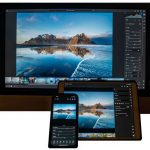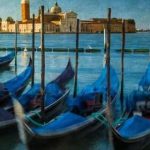
Digital imaging has fundamentally changed the way we work as photographers. Digital brings immediacy, flexibility and lowers the on-going cost of creating images: once you own a digital camera, creating thousands of images entails essentially zero incremental cost. For the most part those images live on our hard-drives or somewhere in the cloud. We look at them on our tablets or smartphones, swiping right or left to skim past dozens or hundreds of images in a few minutes. How much thought and consideration can you give to an image you swipe past in a second or two? How easily can you consider your composition, your use of colour, of light and shadow when seen for an instant on a 4-inch screen?
Printing your work even at modest sizes, and holding that print in your hands, allows you to (in fact forces you to) consider your image more thoroughly; to slow down. You will see things in a printed image that might remain unseen on a smartphone or tablet; you’ll find yourself asking, “What could I do better?” “How can I improve this image?”
“Printing your work helps you become a better photographer”
Historically, the print has always been the ultimate expression of the photographer’s art. When you print your work, you complete the artistic process by taking control of the final expression of your image. A fine print possesses tactile and aesthetic qualities that you control with decisions in post-processing on image size, paper choice and presentation method. These decisions are yours when you print your own work.
Consider all the artistic choices you make when you compose and make your image in camera. You choose a shooting position and a point of view. You choose an appropriate aperture, shutter speed and ISO. You choose an appropriate lens and focal length. You control lighting contrast with graduated filters, fill light, reflectors or perhaps you decide to use an HDR approach. Wouldn’t you want to have the same level of control when you create the final expression of your image?
“Printing your work allows you to complete the artistic process by taking control of the final expression of your work”
Printing your work begins the process of creating a long-lasting record of your development as an artist. Sharing prints with others allows to you to share your vision of the world around you with a tactile, long-lasting medium that will likely be around long after your ephemeral digital files are forgotten or lost in some unreadable hard-drive or long-gone cloud service. Your life experiences, and those of your family are too important not to be committed to archival prints with an expected life up to 200 years or more.
Admittedly, printing your work involves climbing a learning curve; fortunately, it’s not that steep or long. You will also have to acquire a capable printer, which is not without additional cost. If you are serious about becoming the best photographer you can, once you have a assembled a basic kit, the next purchase you should consider is a printer rather than the latest camera body laden with features you probably aren’t going to use anyway.
Print your work! Share it, give it away, frame it or just pin it to the wall… but print your work.
-BPSOP Instructor: Mark English
Mark Teaches:
The Art of Printing & Selling Your Art
















